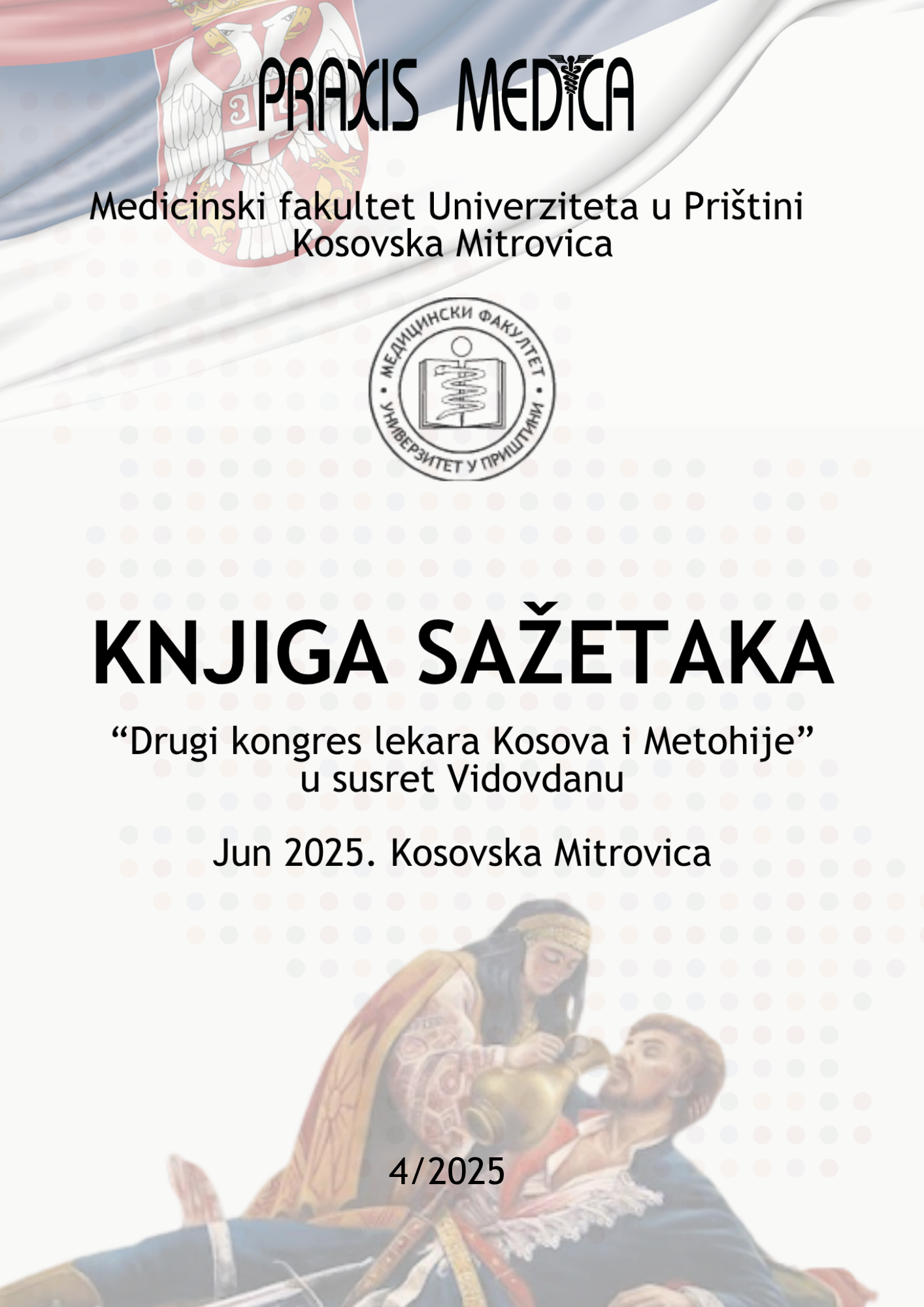Current issue

Volume 53, Issue 4, 2025
Online ISSN: 2560-3310
ISSN: 0350-8773
Volume 53 , Issue 4, (2025)
Published: 30.06.2025.
Open Access
All issues
Contents
15.02.2025.
Case Reports
VITAMIN D - „SOLAR VITAMIN“
The discovery that sunlight can cure rickets was first scientifically confirmed in 1919. Shortly thereafter, in 1924, it was found that inactive lipids in the diet and skin are converted into antirachitic substances under the influence of UV light. Vitamin D (Vit D), also known as the "sunshine vitamin,"
was first identified in 1931. In recent decades, it has regained the focus of interest among the broader scientific community and dermatologists.
Specifically, certain dermatoses have been associated with low Vit D levels, leading to its supplementation in patients. On the other hand, some
dermatoses worsen with sun exposure, necessitating strict avoidance of sunlight and the therapeutic use of Vit D preparations.We are witnessing a
growing number of cases of melanoma and non-melanoma skin cancers, with excessive sun exposure being the primary etiological factor in most
cases. This paper provides a literature review on the historical discovery of Vit D and presents findings from studies examining Vit D levels not only in
various dermatoses but also in other diseases. The number of studies, as well as the spectrum of diseases in which the role of Vit D is being
investigated, continues to increase.
Milijana Relić, Snežana Relić, Tanja Kostić Grujić, Marijana Trajković, Zorica Timotijević, Tamara Jovanovic, Goran Relić
01.12.2021.
Professional paper
Lichen planus disseminatus partim vesiculosus after COVID-19 vaccine
Introduction: Lichen planus is an autoimmune inflammatory disease that can be associated with infections, drugs and vaccines. As concerning the potential triggering effect of vaccine, there is evidence a few cases of new-onset lichen planus that appeared after COVID vaccine, particularly the Pfizer/BioNTech vaccine. Case report: This report is a case of a newonset lichen planus triggered by the Pfizer/BioNTech vaccine administration in a healthy young female. Dermatological examination revealed polygonal, itchy, erythematous papules on trunk, upper and lower limbs, that coalesced into brownish plaques in the ankles, flexural wrist and knee. No mucosal involvement was noted. In view of the clinical picture, the timing of the skin eruption with respect to the vaccine and the histopathologic findings, a vaccine-induced lichen planus triggered by the COVID-19 vaccine has been diagnosed. Conclusion: Lichen planus or lichenoid-like eruption as a cutaneous manifestation following COVID-19 vaccines are rare, and the pathogenesis for its development is still unclear. Clinical trials showed that the leading vaccines upregulate Tcell response (Th1) and incrementing inflammatory cytokines involved in the pathogenesis of autoimmune diseases, such as lichen planus. Although we still do not completely understand its pathogenesis, dermatologists should be aware of the possibility and keep an eye out for worsening or debut of this disease after the COVID-19 vaccine. Vaccinated patients should be monitored for skin manifestations, and dermatological evaluation should be offered, when needed.
Dragica Milosavljević, Milijana Relić, Mirjana Stojanović-Tasić
01.12.2013.
Professional paper
GENITALNE INFEKCIJE MIKOPLAZMAMA
Tokom retrospektivne studije, koja je urđena u periodu od 01.01. do 31.12.2012.godine, pregledano je 1035 uzoraka vaginalnog sekreta, cervikalnog brisa i brisa uretre na UU i Mh. Osnovni cilj studije je bio utvrđivanje učestalosti infekcije Mikoplazmama, distribucije prema polu, godinama života pacijenata, kliničke dijagnoze zbog koje je urađeno mikrobiološko ispitivanje pacijenata i utvrđivanje osetljivosti izolovanih uzročnika na antibiotike. Od ukupno 1035 ispitanih uzoraka pozitivan nalaz je bio kod 331 pacijenta, od toga je 316 (95,5%) ženskog i 15 (4,5%) muškog pola. Razlika je statistički značajna. Nisu nađene statistički značajne razlike u prosečnoj starosnoj dobi između žena (29 godina) i muškaraca (30 godina). Infekcija samo sa UU je statistički značajno češća (70.1%) u odnosu na Mh (5.4%) i mešovitu infekciju (24.5%). Učestalost infekcije uzrokovane UU kod ženskog pola iznosila je 70%, a kod muškog pola 80%. Osobe muškog i ženskog pola ne razlikuju se statistički značajno prema učestalosti infekcije uzrokovane UU. Najveća učestalost pacijenata ženskog pola, bila je sa dijagnozom Vulvovaginitisa 34%, Colpitis je imalo 22%; Colpitis i Cervicitis-17%, dok je samo Cervicitis bio dijagnostikovan kod 10% bolesnica. Razlika u učestalosti kliničkih dijagnoza je statistički značajna. Svi izolovani uzročnici pokazuju statistički značajno veću osteljivost na tri i više antibiotika. Osetljivost na tri i više antibiotika nije statistički značajno povezana sa uzročnikom infekcije.
R. Urosevic, Milijana Relic, N. Relic, A. Ilic, V. Minic





